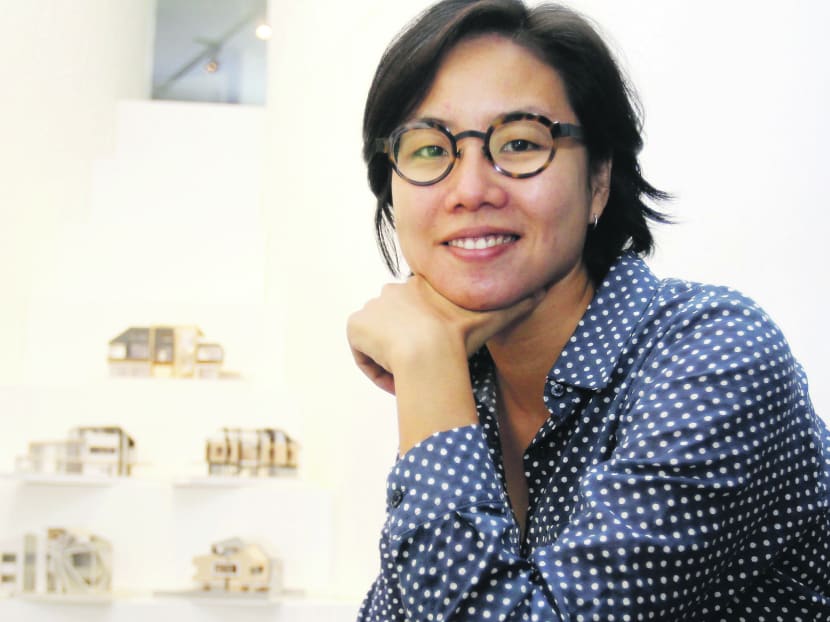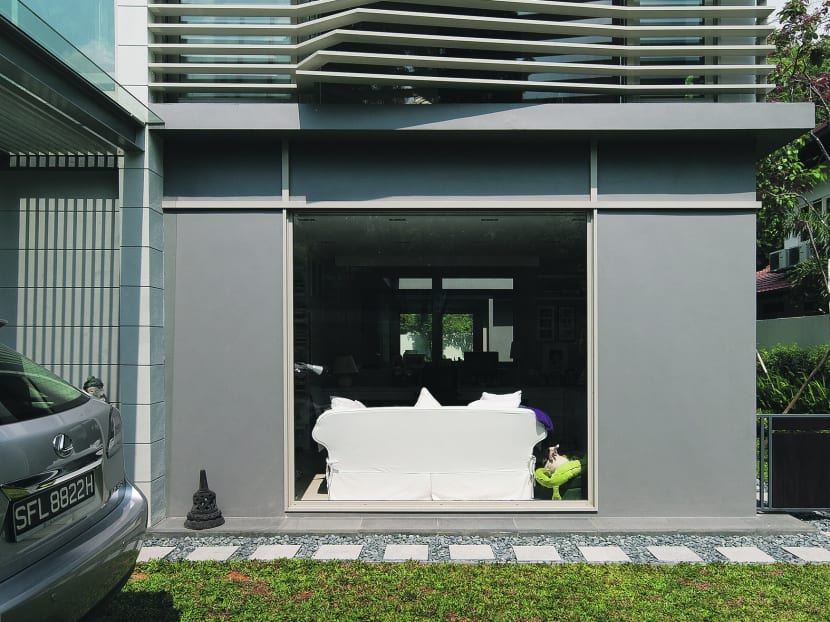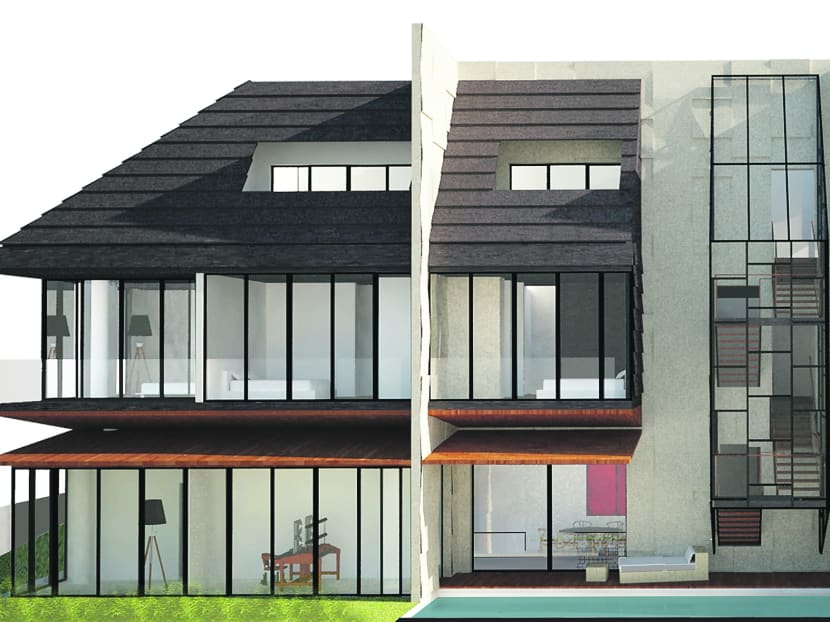Re-imagining spaces
SINGAPORE — A look through architect Wu Yen Yen’s portfolio of work turns up some eye-catching creations: A staircase improbably stacked on top of another; a surrealist re-imagining of a magazine display shelf.



SINGAPORE — A look through architect Wu Yen Yen’s portfolio of work turns up some eye-catching creations: A staircase improbably stacked on top of another; a surrealist re-imagining of a magazine display shelf.
Yet beyond the visual gimmickry, these fanciful designs serve as solutions to very real problems. Such as allowing inhabitants of a home to have their own private space while still being interconnected, or enabling more of a magazine’s cover to be shown without the need for additional shelving space.
Putting function over form, without necessarily compromising either, lies at the heart of Ms Wu’s design philosophy, and that of the firm she founded four years ago, Genome Architects.
“There are some clients who just point at a picture of a house in a magazine and say I want something just like that, but we want to give them ideas and solutions that are borne out of where they are coming from. The same house cannot be for everyone,” said Ms Wu, 36, who worked for six years at two architecture firms before starting Genome in 2009 as its Principal Architect.
Working from home initially, her first commissions came through references from friends and family. As her portfolio grew, so did favourable word-of-mouth and media coverage, which led to more jobs.
She now runs a three-person outfit in an office along Zion Road, working primarily on residential architecture projects as well as interior design for commercial developments.
In an effort to keep the commercial pressure of running a business from tainting her vision of architecture, the self-described idealist teaches first-year architectural students part-time at the National University of Singapore (NUS) twice a week.
“We learn the ideal way of doing things in school, but when you come out to work you start to be concerned about what’s in or what’s cool. Which is why I teach, because it forces you to practise what you preach,” said Ms Wu, herself an NUS architecture graduate. She also holds a Masters of Architecture from Columbia University in New York.
But having an uncompromising vision about her work is more than just pure ideology — she has turned away potential commissions because of it. As a small business, it also serves as a competitive trump card that gives her a better hand against larger rivals with longer track records.
However, argued Ms Wu, the architectural landscape is skewed against small practices like hers. Firms need to be of a certain size just to be in the running for government projects, a criteria that shuts out the smaller outfits from working on schools, train stations and other civic institutions.
“Many architects who start their own business came from large firms and have worked on big projects, so it doesn’t mean because you’re in an SME (small- or medium-sized enterprise) you don’t have the experience to tackle bigger projects,” she said.
She hopes to snare such projects through competitions held by the Singapore Institute of Architects, which gives entrants a chance to win projects commissioned by government-linked bodies. But even here, the odds are stacked against small players, as large firms who can devote dedicated teams to the event can also take part.
Her ambition is to work on projects involving educational and religious institutions, as these share similar goals to architecture; essentially to turn the mundane into something beautiful and inspirational at its core.
With only two architecture schools in Singapore, Ms Wu also faces the challenge of attracting talent. She turns again to her idealism for help, in this case as a magnet to draw like-minded professionals to her cause, luring them away from higher-paying rivals.
For now, she is kept busy with residential projects, as well as her continued efforts to educate clients about the need for a house to be more than just a thing of beauty, but rather a brick-and-mortar complement to a family’s unique circumstance, regardless of one’s budget.
“A lot of people think that if I have a small budget, I can’t afford a certain look, but it’s about how we re-imagine our environment, and that doesn’t have a price tag,” she explained.
Currently, she is re-imagining the relationship between structure and design in a home. In one ongoing project, she aims to combine all the columns in a house to act not only as a supporting structure, but also as an inhabited space.
“Instead of a sea of columns, we consolidated them into two structural cores which can contain usable rooms inside. The idea is to collapse space and structure together to make them more efficient and turn everyday things of beauty.”





